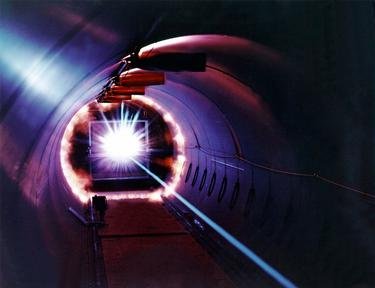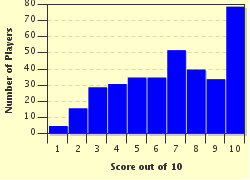Quiz Answer Key and Fun Facts
1. Protons and neutrons are tiny, but they're building blocks of the everyday world. If you wanted to find these particles, where would be the best place to look for them?
2. One of the easiest things to measure about a particle is its electric charge. Our two heroes -- protons and neutrons -- have two different charges. One has a positive charge, equal and opposite to the charge of an electron. Which one has an electric charge of zero?
3. Protons and neutrons aren't elementary particles: they're made up of other stuff. In fact, they're baryons, which means it's useful to think of them as containing three constituent quarks. In this picture, what types (or "flavors") of quarks go into protons and neutrons?
4. It's a basic tenet of electricity and magnetism that like charges repel, so if you want to bind a few identical quarks together -- or identical protons together -- you're going to need something powerful to do the job. Appropriately, this is where the strong force comes in. Which of these particles is the carrier of the strong force?
5. The three-constituent-quark picture of protons and neutrons is useful, but it's a bit oversimplified. The insides of such particles are extremely dynamic places: in fact, a "sea" of particles, constantly popping in and out of existence, surrounds our three constituent quarks. Of what does this sea consist?
6. When a particle is held together by the strong force, as protons and neutrons are, it has to follow certain rules. In particular, its components' strong-force "charges" have to cancel each other out. In the language of particle physics, how is this requirement described?
7. In particle physics, "like" particles aren't just similar, they're identical. It's theoretically impossible to tell two protons, or two neutrons, apart. So we know that protons and neutrons must have well-defined masses that are the same every time, despite all their complicated internal dynamics. Which one is lighter?
8. One of the fundamental properties of a particle is its spin, an intrinsic angular momentum that -- among other things -- dictates the way that identical particles behave in a quantum-mechanical system. What are the spins of the proton and neutron?
9. Protons and neutrons have very similar masses, and the strong force treats them almost exactly the same. To explain this, physicists postulated a new type of symmetry, borrowing some mathematical machinery from the concept of intrinsic angular momentum. What is the name given to this likeness between proton and neutron?
10. Protons don't need neutrons to be happy with their lot in life; they can exist as free protons for pretty much forever. (A free proton is often called a hydrogen ion -- the nucleus of a hydrogen atom, without an electron bound to it.) Neutrons are much more insecure. A free neutron exists for an average of only fifteen minutes before decaying into something else. Through what force do free neutrons decay?
Source: Author
CellarDoor
This quiz was reviewed by FunTrivia editor
gtho4 before going online.
Any errors found in FunTrivia content are routinely corrected through our feedback system.


